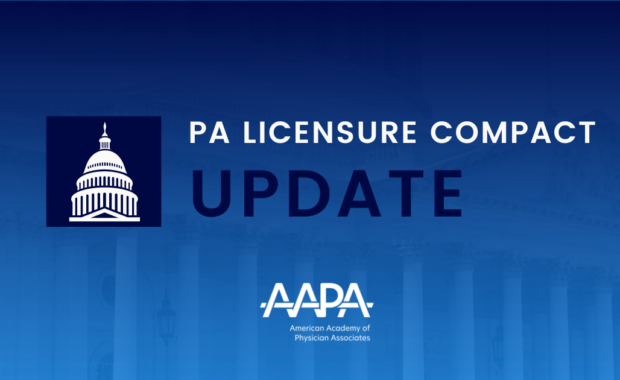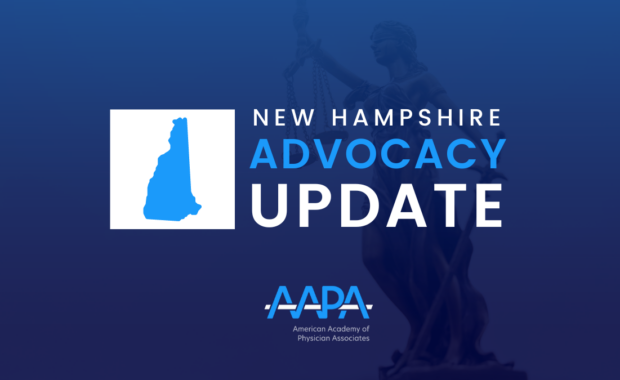New Adult Hypertension Guidelines Released
AAPA among Authors of Updated Guidelines
November 13, 2017
The American Academy of PAs (AAPA), the American Heart Association (AHA), American College of Cardiology (ACC), and several other health organizations released new prevention, diagnosis and treatment guidelines that redefine high blood pressure, also known as hypertension. The guidelines address blood pressure management for a broad spectrum of causes and complications, such as kidney problems, heart failure and diabetes.
AAPA Director of Regulatory and Professional Practice, Sondra DePalma, MHS, PA-C, CLS, DFAAPA, AACC, represented AAPA on the writing committee that revised the guidelines. Multiple stakeholders did extensive peer reviews of the document prior to final approval. AAPA’s Board of Directors endorsed the guidelines in October.
“The new hypertension guidelines, intended to educate, raise awareness and compel people to take action earlier, were drafted with a focus on earlier detection and prevention,” said L. Gail Curtis, PA-C, MPAS, DFAAPA, president and chair of AAPA’s Board of Directors. “PAs, no matter their specialty, are on the frontlines in identifying and treating people with high blood pressure. We are proud that a PA was able to bring the PA perspective to the table as one of the authors.”
The guidelines change the definition of high blood pressure. iIt is now considered any measurement at or above 130 systolic or 80 diastolic. (Systolic is the term for the top number, diastolic the bottom.) High blood pressure used to be defined as readings at or above 140 systolic or 90 diastolic. A measure of 140/90 has been the established definition for high blood pressure since 1993ii, when it was changed based on then-current research.
“The new definitions of elevated blood pressure and hypertension are based on greater understanding from evidence and clinical trials about the relationship between high blood pressure and cardiovascular risk, as well as evidence of cardiovascular risk reduction with evidence-based treatment,” said DePalma. “Lower blood pressure guidelines and treatment targets are expected to lead to greater clinical benefit for patients. The new guidelines recommend treatment based on a patient’s underlying cardiovascular risk. Use of a combination of absolute cardiovascular risk and BP level to guide treatment is more efficient and cost-effective at reducing risk of cardiovascular disease than is the use of blood pressure level alone.”
According to AHA, statistically, the new guidelines mean more Americans will have high blood pressure. However, that doesn’t mean they face dramatic new risks or need to immediately start taking medication. The guidelines, which may help people identify problems earlier, mean nearly half of American adults (46 percent) will have high blood pressure. That increases from 32 percent iiiunder the previous definition. While more American adults will be classified as having high blood pressure, only a small percentageiv more may need medication in addition to making lifestyle changes, according to the guidelines.
The new guidelines call for more emphasis on self-monitoring for high blood pressure diagnosis, treatment and management. Patients should be trained by healthcare providers to accurately monitor themselves at home.
Team-based care is recognized and recommended by the guidelines to improve effective reductions in blood pressure. Use of teams including physicians, PAs, nurses, pharmacists, and other health care professionals is recognized to improve patient management and increase access to care.
DePalma will present The Hype on Hypertension: An Overview of the 2017 Guidelines for the Prevention, Detection, Evaluation and Management of High Blood Pressure in Adults, on the history, evolution, controversy, and contemporary evidence of blood pressure guidelines and hypertension management to improve patient outcomes, on Monday, May 21, 2018, from 1:00 to 2:00 p.m. during AAPA 2018 in New Orleans.
Learn more about the impact of the new guidelines.
More Resources:
American Heart Association Journal article
Journal of American College of Cardiology
Upcoming ACC guidelines and clinical documents
_____________________________________________________
i Section 8.1.3
ii JNC5 established 140/90. Previously was 160, and before that only diastolic.
Page 5: https://archive.org/stream/fifthreportofjoi00nati#page/4/mode/2up
Also, this abstract lists all the JNCs http://circ.ahajournals.org/content/131/Suppl_1/A24
JAMA publication Jan 1993 http://jamanetwork.com/journals/jamainternalmedicine/article-abstract/616929
iii Section 3.3
iv Section 8.1.2
Thank you for reading AAPA’s News Central
You have 2 articles left this month. Create a free account to read more stories, or become a member for more access to exclusive benefits! Already have an account? Log in.



